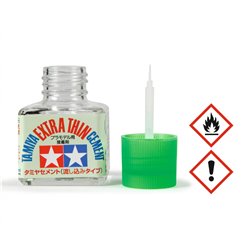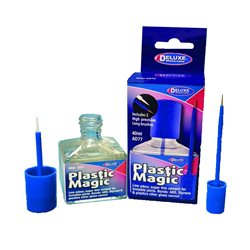The term permanent way refers to the ballasted track. This is what is usually called in the UK the railway track and...
No products
Product successfully added to your shopping cart
There are 0 items in your cart. There is 1 item in your cart.
Search Tips
What is the difference between plastic cement and plastic glue?
The difference between plastic cement and plastic glue lies primarily in how they work and the type of bond they create. While the terms are sometimes used interchangeably, they can refer to distinct products depending on the context:
Plastic Cement
Plastic cement is the go-to adhesive for scale modelling. It's not a glue in the traditional sense but a solvent-based product that chemically welds the plastic parts together. When applied, it softens the plastic surfaces, allowing them to bond as a single, solid piece once the solvent evaporates.
- Pros:
- Creates a very strong, seamless bond.
- Ideal for polystyrene and other common plastics used in model kits.
- Allows some repositioning time before the bond sets.
- Cons:
- Not suitable for non-plastic materials.
- Requires precise application to avoid damage to details or surface textures.
Plastic Glue
Plastic glue, on the other hand, is a more general term often used for adhesives like cyanoacrylate (superglue) or PVA glue. These don't chemically melt the plastic but instead form a physical bond between surfaces.
- Pros:
- Versatile—works on plastic and other materials like resin or metal (common in aftermarket parts).
- Faster setting times (especially cyanoacrylate).
- Cons:
- Bond is not as strong or seamless as plastic cement.
- Excess glue can leave visible residue.
Which to Choose?
- Use plastic cement for joining standard plastic parts in model kits—it provides a stronger and more durable finish.
- Use plastic glue (cyanoacrylate) for attaching delicate parts, photo-etched details, or non-plastic components.
In short, plastic cement is the specialist adhesive for plastic modelling, while plastic glue is a more general-purpose option that's useful for mixed-material builds.
Click here to receive the tips weekly in your mailbox. You can unsubscribe at any time.










